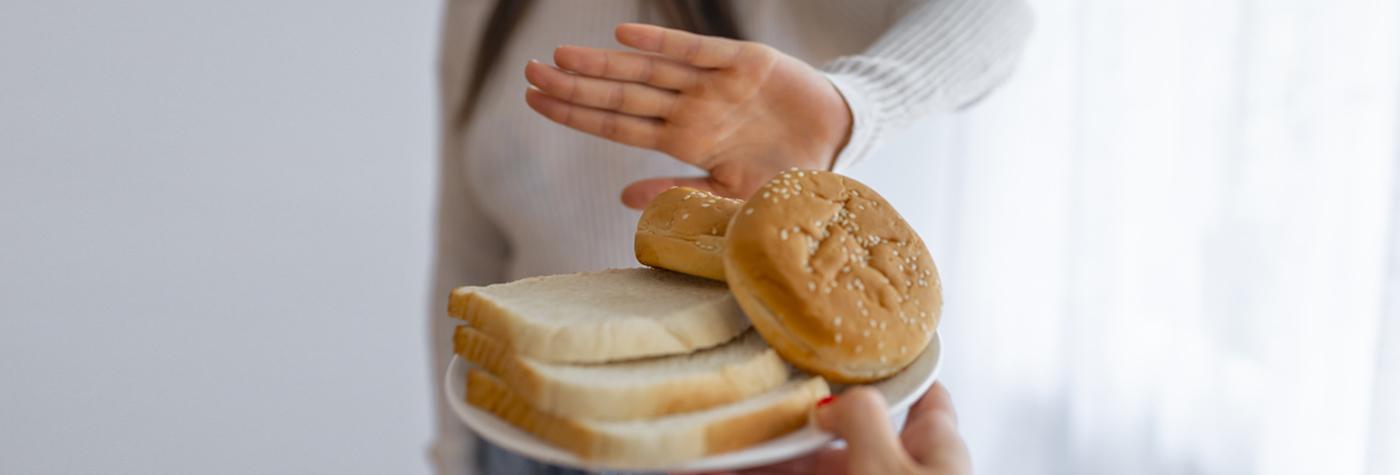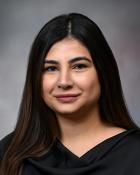Celiac disease
Celiac disease is an abnormal immune system reaction to gluten, a protein found in grains like wheat, barley, rye, and triticale (a wheat-rye cross). It damages the small intestine so that it can't do a good job of absorbing nutrients from your food.
If you have celiac disease, you need to avoid foods that contain gluten.
Celiac disease is also known as celiac sprue, gluten-sensitive enteropathy, and nontropical sprue.
Symptoms
What are the symptoms of celiac disease?
Symptoms of celiac disease include:
- Gas and bloating.
- Belly pain.
- Diarrhea or other changes in bowel movements.
- Weight loss.
- Feeling very tired.
- Weakness.
- Tingling, numbness, or pain in the hands or feet (neuropathy).
Symptoms may come and go. They may be very mild and go completely unnoticed. Or they may be severe symptoms that impact your daily life.
Causes
What causes celiac disease?
Doctors think celiac disease may be a problem with your immune system. Eating foods that contain gluten may trigger the problem. Having certain genes can increase your chance of getting it. You're more likely to have these genes and get celiac disease if a close family member has the disease.
Diagnosis
How is celiac disease diagnosed?
Your doctor will ask questions about your symptoms and do a physical exam.
You may have blood tests to see if you have certain antibodies that could mean you have the disease. Celiac disease triggers the immune system to produce these antibodies.
To find out for sure if you have celiac disease, you will probably have an endoscopy. In this test, a doctor uses a thin, lighted tube to look at the inside of your small intestine. Your doctor can also take small samples of tissue to be tested in a lab. This is called a biopsy.
If the biopsy shows signs of celiac disease (such as abnormal villi and inflammation in the small intestine), a gluten-free diet will be recommended.
A diagnosis of celiac disease is confirmed if the diet makes symptoms go away and if antibody tests become normal.
Living with celiac disease
What happens when you have celiac disease?
Celiac disease is a lifelong (chronic) condition. In adults, symptoms may occur at any age, but they are most common in the person's 20s, 30s, and 40s. In some children, symptoms start shortly after cereal is introduced into the diet, usually after 6 months of age.
Sometimes a person who has celiac disease doesn't have symptoms after eating foods that contain gluten. But damage to the small intestine is still occurring.
Within 2 weeks after starting a gluten-free diet, most people with celiac disease find that their symptoms improve. Symptoms should completely disappear within 3 months. Staying on a gluten-free diet usually keeps symptoms from coming back. It also lowers the risk for complications.
Children who have untreated celiac disease can become very ill. They may need to go to the hospital for treatment with fluids and medicine to restore nutrients.
Staying gluten-free when you have celiac disease
Having celiac disease means that you will need to follow a gluten-free diet from now on. This can be hard, especially if you don't have symptoms.
These tips may help.
- Get lots of advice.
Dietitians, other health experts, and celiac disease support groups can give you lots of help. Try keeping a food diary until you are more familiar with planning meals without gluten.
- Watch out for hidden gluten.
Read labels on prepared or processed food carefully. For example, "hydrolyzed vegetable protein" may come from wheat and contain gluten.
- Prevent contamination.
Store gluten-free foods in a separate place from foods that contain gluten. Make sure you keep cooking surfaces, utensils, and appliances clean and free of gluten before you use them. If you use a toaster, use a separate toaster for gluten-free breads.
- Let people know about your dietary needs.
If you eat food you don't prepare, such as at a restaurant, make sure you let those preparing the food know that you have special dietary needs.
- Check your (or your child's) weight weekly.
This helps you make sure that you're getting enough nutrients.
- Eat plenty of fruits and vegetables.
This helps you avoid constipation. If you need to, use gluten-free commercial fiber preparations, such as those that contain rice bran.
Treatment
How is celiac disease treated?
The treatment for celiac disease is to avoid all foods that have gluten. This is called a gluten-free diet. Eating even the smallest amount of gluten can cause symptoms such as weight loss and diarrhea.
A gluten-free diet means:
- Avoiding all foods with wheat, barley, rye, triticale (a wheat-rye cross), or oats. Oats may later be slowly brought back into the diet.
- Avoiding beer unless it's gluten-free. Beers with and without alcohol contain gluten unless the label specifically says they're gluten-free.
Gluten can also be in things you may not expect, like medicine, vitamins, and lipstick.
You may also be advised to avoid milk or milk products for a while until your intestine heals. Then you may be able to slowly reintroduce them.
If you have nutritional deficiencies, you may need other treatments. Treatments include vitamin, iron, and calcium supplements.
Nutritional counseling from a registered dietitian who is familiar with celiac disease can help you create a practical and healthy gluten-free diet.
Self-care
How can you care for yourself when you have celiac disease?
- Eat a gluten-free diet to prevent symptoms and damage to the small intestine. Even a small amount of gluten may cause damage.
- Avoid all foods that contain wheat, rye, and barley. Foods that are often made with these grains include bread, bagels, pasta, pizza, malted breakfast cereals, and crackers.
- Avoid oats, at least at first. Oats may cause symptoms in some people. The oats may be contaminated with wheat, barley, or rye from processing. But many people who have celiac disease can eat moderate amounts of oats without having symptoms. Health professionals vary in their long-term recommendations regarding eating foods with oats. But most agree it is safe to eat oats labeled as gluten-free.
- You may need to avoid milk and milk products for a while. Once you stop eating any gluten, the intestine will begin to heal. Then it should be okay to drink milk and eat milk products.
- Read food labels carefully and look for hidden gluten, such as gluten in medicine and some food additives. If a label says "modified food starch," the product may contain gluten.
- Plan your diet around:
- Eggs.
- Dairy products, if you can eat them. Cheese, yogurt, and other dairy products can be an important part of the diet.
- Flours and foods made with amaranth, arrowroot, beans, buckwheat, corn, cornmeal, flax, millet, potatoes, gluten-free oat bran, quinoa, rice, sorghum, soybeans, tapioca, or teff.
- Fresh, frozen, and canned meats, fruits, and vegetables. Watch for added gluten.
- Talk to your doctor or contact your local hospital or dietitian for information about support groups in your area. You may find a support group helpful for discovering ways to help you deal with celiac disease. Celiac disease support groups often share recipes and good food sources.
- Look for gluten-free foods. Many food stores, especially health food stores, offer specially marked gluten-free food.
Copyrighted material adapted with permission from Healthwise, Incorporated. This information does not replace the advice of a doctor.



